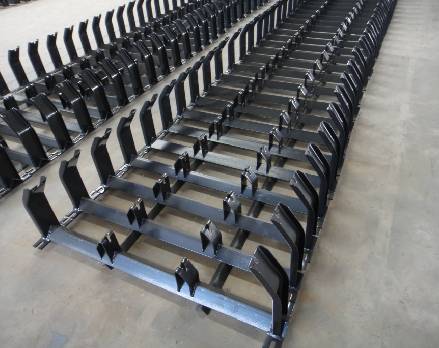 Afrikaans
Afrikaans  Albanian
Albanian  Amharic
Amharic  Arabic
Arabic  Armenian
Armenian  Azerbaijani
Azerbaijani  Basque
Basque  Belarusian
Belarusian  Bengali
Bengali  Bosnian
Bosnian  Bulgarian
Bulgarian  Catalan
Catalan  Cebuano
Cebuano  Corsican
Corsican  Croatian
Croatian  Czech
Czech  Danish
Danish  Dutch
Dutch  English
English  Esperanto
Esperanto  Estonian
Estonian  Finnish
Finnish  French
French  Frisian
Frisian  Galician
Galician  Georgian
Georgian  German
German  Greek
Greek  Gujarati
Gujarati  Haitian Creole
Haitian Creole  hausa
hausa  hawaiian
hawaiian  Hebrew
Hebrew  Hindi
Hindi  Miao
Miao  Hungarian
Hungarian  Icelandic
Icelandic  igbo
igbo  Indonesian
Indonesian  irish
irish  Italian
Italian  Japanese
Japanese  Javanese
Javanese  Kannada
Kannada  kazakh
kazakh  Khmer
Khmer  Rwandese
Rwandese  Korean
Korean  Kurdish
Kurdish  Kyrgyz
Kyrgyz  Lao
Lao  Latin
Latin  Latvian
Latvian  Lithuanian
Lithuanian  Luxembourgish
Luxembourgish  Macedonian
Macedonian  Malgashi
Malgashi  Malay
Malay  Malayalam
Malayalam  Maltese
Maltese  Maori
Maori  Marathi
Marathi  Mongolian
Mongolian  Myanmar
Myanmar  Nepali
Nepali  Norwegian
Norwegian  Norwegian
Norwegian  Occitan
Occitan  Pashto
Pashto  Persian
Persian  Polish
Polish  Portuguese
Portuguese  Punjabi
Punjabi  Romanian
Romanian  Russian
Russian  Samoan
Samoan  Scottish Gaelic
Scottish Gaelic  Serbian
Serbian  Sesotho
Sesotho  Shona
Shona  Sindhi
Sindhi  Sinhala
Sinhala  Slovak
Slovak  Slovenian
Slovenian  Somali
Somali  Spanish
Spanish  Sundanese
Sundanese  Swahili
Swahili  Swedish
Swedish  Tagalog
Tagalog  Tajik
Tajik  Tamil
Tamil  Tatar
Tatar  Telugu
Telugu  Thai
Thai  Turkish
Turkish  Turkmen
Turkmen  Ukrainian
Ukrainian  Urdu
Urdu  Uighur
Uighur  Uzbek
Uzbek  Vietnamese
Vietnamese  Welsh
Welsh  Bantu
Bantu  Yiddish
Yiddish  Yoruba
Yoruba  Zulu
Zulu types of conveyor belt rollers
Types of Conveyor Belt Rollers
Conveyor belts are integral components in many industrial applications, providing efficient transportation of materials across various terrains. The effectiveness and longevity of a conveyor belt system largely depend on the design and functionality of its components, particularly the rollers. Conveyor belt rollers are cylindrical devices that support the belt and help guide materials along the belt's path. Understanding the different types of conveyor belt rollers is crucial for selecting the right equipment for specific applications.
1. Idler Rollers
Idler rollers are the most common type of conveyor rollers. Their primary function is to support the weight of the conveyor belt and cargo as it moves. They are strategically placed underneath the belt to maintain its tension and ensure a smooth operation. Idler rollers come in various designs, including flat and troughed shapes. Troughed idler rollers are particularly popular as they can accommodate bulk materials and prevent spillage during transit.
2. Drive Rollers
Drive rollers are pivotal to the functionality of conveyor systems. Unlike idler rollers, drive rollers are connected to a power source and are responsible for moving the conveyor belt itself. When the motor turns the drive roller, it pulls the belt along, carrying materials to their designated locations. Drive rollers are usually coated with rubber or other materials to enhance grip and efficiency. They can come in varying diameters and lengths, allowing manufacturers to customize them according to the conveyor system's requirements.
As the name suggests, return rollers are located on the return side of the conveyor belt. They play a critical role in supporting the belt as it returns to the starting point after delivering its load. Return rollers help maintain belt tension and can prevent sagging or misalignment. Typically, these rollers are designed to be lightweight yet sturdy, ensuring they withstand the wear and tear of returning belts while minimizing friction.
4. Impact Rollers
types of conveyor belt rollers

Impact rollers are placed in high-impact areas where materials are loaded onto the conveyor belt. These rollers are designed to absorb the shock and stress exerted by heavy loads. Constructed from durable materials, they help protect the belt integrity from damage caused by falling materials. Impact rollers often feature a rubberized surface to reduce noise and enhance shock absorption, increasing the overall lifespan of the conveyor belt system.
5. Guide Rollers
Guide rollers are specialized rollers used to maintain alignment of the conveyor belt. They are typically found at the edges of the conveyor system and ensure that the belt stays centered during operation. Misalignment can lead to material spillage, excessive wear on the belt, and increased maintenance costs. Guide rollers help to mitigate these issues, providing a stable and reliable path for the conveyor belt.
6. Weighted Rollers
Weighted rollers offer additional benefits in certain applications. By adding weight to the roller structure, they help apply consistent pressure on the belt, which can enhance the grip and increase the friction necessary for moving heavy loads. This feature is particularly beneficial in steep conveyor systems where materials are at risk of sliding back down.
7. Specialty Rollers
In addition to the conventional types, there are also specialty rollers tailored for specific applications or environments. These can include rollers designed for high or low-temperature environments, corrosive conditions, or those that require specific coatings for hygiene in food industries. Specialty rollers are crucial for meeting industry standards and ensuring efficient operation in diverse settings.
Conclusion
The selection of conveyor belt rollers is critical for the efficiency and reliability of any conveyor system. Understanding the various types of rollers—such as idler rollers, drive rollers, return rollers, impact rollers, guide rollers, weighted rollers, and specialty rollers—can assist engineers and operators in making informed decisions. Properly selecting and maintaining these components not only enhances material handling processes but also contributes to the longevity and effectiveness of the entire conveyor system. As industries continue to evolve, so will the technologies and designs of conveyor belt rollers, leading to more innovative solutions for material transport challenges.
-
Taper Centering Idler Set for Conveyor SystemsNewsJun.25,2025
-
Small Idler Rollers for Industrial ConveyorsNewsJun.25,2025
-
Guide Training Idler Set for Conveyor MaintenanceNewsJun.25,2025
-
Friction Offset Idler Set for Industrial UseNewsJun.25,2025
-
Double-Center-Roller Idler AlignmentNewsJun.25,2025
-
Channel Inset Impact Troughing Idler Set for Heavy LoadsNewsJun.25,2025





























